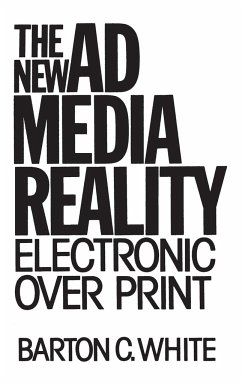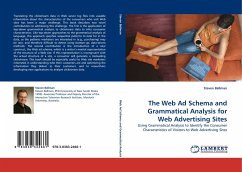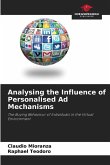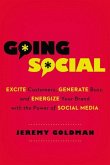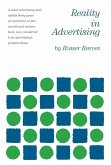All advertising is not created equal. This unique new look into the psychology of advertising explains why the electronic media should be the preferable form of advertising for any business interested in the maximum return on advertising investment. Using behavioral psychology as it applies to learning and consumer behavior, White details how and why radio and/or television is such a powerful advertising force and how advertisers can use it to maximize their advertising returns and reduce overall advertising waste.
Micromanaging the advertising budget for the least amount of total waste will be mandatory in the overly competitive environment of the 1990s. Such an approach can only be successful if the advertiser turns to the electronic media as the major source for advertising and promotion. Here, White examines the historical factors leading to print (newspaper) dominance in our advertising-oriented culture and explains why these assumptions are no longer valid in the electronic media world of the 1990s. Using behavioral psychology as it applies to learning and consumer behavior, White shows how radio and television are able to franchise the minds of potential consumers. White helps advertising managers and businesspeople come to grips with the paradigm shift in thinking from print to electronic media advertising. This book will help all businesspeople and advertising managers understand why the electronic media must be the major player in all business advertising in order to maximize return on advertising investment and why the newspaper must be deemphasized in the complex matrix of the media mix. Readers will come to understand how all advertising works, how small the number of potential consumers for any product or service actually is, and how these factors impact on media decisions. All advertising is not equal and understanding the differences may mean either success or failure in the competitive retail environment of the 1990s.
Hinweis: Dieser Artikel kann nur an eine deutsche Lieferadresse ausgeliefert werden.
Micromanaging the advertising budget for the least amount of total waste will be mandatory in the overly competitive environment of the 1990s. Such an approach can only be successful if the advertiser turns to the electronic media as the major source for advertising and promotion. Here, White examines the historical factors leading to print (newspaper) dominance in our advertising-oriented culture and explains why these assumptions are no longer valid in the electronic media world of the 1990s. Using behavioral psychology as it applies to learning and consumer behavior, White shows how radio and television are able to franchise the minds of potential consumers. White helps advertising managers and businesspeople come to grips with the paradigm shift in thinking from print to electronic media advertising. This book will help all businesspeople and advertising managers understand why the electronic media must be the major player in all business advertising in order to maximize return on advertising investment and why the newspaper must be deemphasized in the complex matrix of the media mix. Readers will come to understand how all advertising works, how small the number of potential consumers for any product or service actually is, and how these factors impact on media decisions. All advertising is not equal and understanding the differences may mean either success or failure in the competitive retail environment of the 1990s.
Hinweis: Dieser Artikel kann nur an eine deutsche Lieferadresse ausgeliefert werden.

